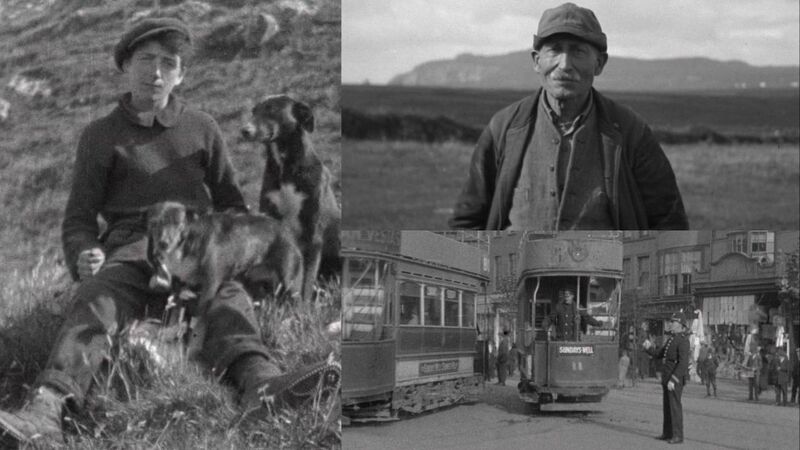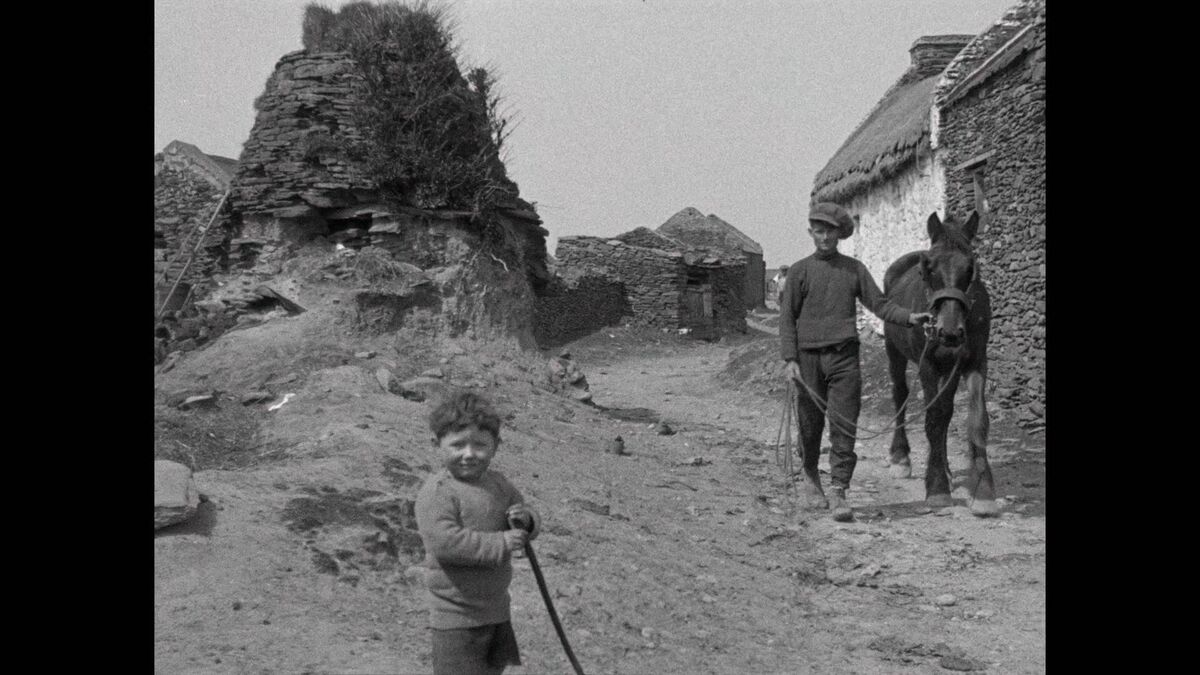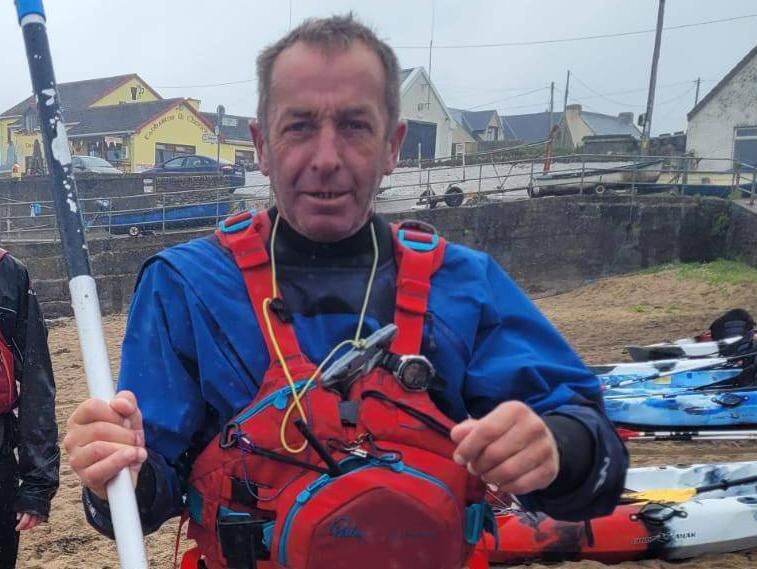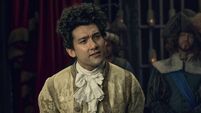Cork shawlies and Kerry's pipe-smoking dog: American visitor's 100-year-old footage restored

The Irish Film Institute has dubbed Benjamin Gault an “accidental anthropologist” for the human subjects on whom he turned his camera, and the tantalising glimpses of an increasingly lost way of life that his silent films capture.
These are precious moments captured on film that, until recently, lay forgotten in a vault for almost a century. A young woman spots the cameraman filming a crowd leaving Easter Mass at Ballyferriter Church, and covers her face and hair with her black shawl. Young couples grin at the camera at Dingle races.
In one strange little clip, a young man sits on a stony hillside, accompanied by a tail-wagging dog with a pipe in his mouth.
“Yes, that’s the main story that stayed in my head, the dog with the pipe,” Micheál Ó Mainnín says with a laugh. “That dog belonged to the Dalys, the same family that sold Inishvickillane to Charlie Haughey.” It was Ó Mainnín’s grandfather, also Micheál, who gave the dog the pipe.
The man filming the scene was an ornithologist from Illinois, who, over two visits to Corca Dhuibne in 1925 and 1926, engaged the services of locals to visit seabird colonies on Inishvickillane and the other Blaskets, and lugged around a hand-cranked 35mm movie camera, capturing both bird life and human life on the Dingle Peninsula shortly after Irish independence.
Set dancing, farming and hunting in Kerry, and even some footage of trams and shawlies in Cork city: the Irish Film Institute has dubbed Benjamin Gault an “accidental anthropologist” for the human subjects on whom he turned his camera, and the tantalising glimpses of an increasingly lost way of life that his silent films capture.
Ó Mainnín, now 58 and still fishing and farming near Ballyferriter, originally set out over a decade ago to discover what happened to the film that Gault shot during his time in Kerry.
He grew up hearing tales of the American who came to stay in the village of Ballyferriter, taking up two rooms of the only hostelry in the village with a paraphernalia of collector’s equipment, specimen boxes and his movie camera. As well as filming, Gault was a collector, and word soon went out that he would pay for bird specimens.
“He used to collect birds,” Ó Mainnín says. “People hunted for birds at that time anyway. It was a part of their diet, so they hunted them for the table.” “The following specimen was brought in by James Moriarty of Blackfields whose brother Thomas shot it in the bog near that place,” one entry in Gault’s meticulous notebook reads.
“The duck was a sitting female. Many of the breast feathers were gone. An outrage was done, and I told him so, in committing such an act, but these people are hungry for money. I gave him a shilling for it. He wanted two. Much sentiment is lacking here for the bird: money and the pot are first and foremost every time.”
Gault may have been angered by the killing of a female on her nest, but he had arrived with cash into a community living in conditions akin to those in developing countries today. The inhabitants of Corca Dhuibhne and the islands used every ounce of their resourcefulness and skills to eke out a living on stony soils and rough Atlantic seas.

Despite many moments of joy and humour captured in the films, it’s impossible not to see hardship too. The children who jostle each other outside Ballyferriter schoolhouse are barefoot. The roads are unpaved. The faces of the men rowing currachs or sowing seed potatoes are lean.
“People had nothing at that time,” Ó Mainnín says. “It was just after the Civil War and times were bad.”
It is thanks to Ó Mainnín’s initial inquiries, and a collaborative project between the Chicago Academy of the Sciences, San Francisco Silent Film Festival and the Irish Film Institute (IFI), and some generous benefactors, that Gault’s beautiful archive is viewable today.
After some initial research that revealed that Gault’s bird specimens had been donated to the Smithsonian Institute, Ó Mainnín eventually contacted Dawn Roberts, senior director of collections at Chicago Academy of Sciences. Could Gault’s notebooks and films have ended up there?
Sure enough, Roberts emailed him some pages of Gault’s notebooks, in which Ó Mainnín could clearly see familiar placenames. They contained many curious and sometimes endearing notes, such as one from 1925 in which he notes he was brought a pet rook, or Corvus Frugilegus, by a Mr Patrick Sheehy. The bird’s name was Paddy, and he liked to eat potatoes.
Roberts told Ó Mainnín that she had discovered Gault’s film too, all 207 metres of it. Nobody knew what was on it, it was likely some of the negatives had never been printed at all. This was potentially a very great treasure. But it was also potentially deadly.
“She told me that there was movie reel there in the basement, but that it was nitrate and that it was explosive,” Ó Mainnín says.
After some coverage in local press and on TG4, Robert Byrne of the San Francisco Silent Film Festival became involved, private donors came aboard, and the film was safely retrieved and sent for restoration and digitisation with vintage film experts Colorlab.
Today, the digitised film, complete with musical accompaniment by Dingle multi-instrumentalists Aoife and Deirdre Granville, can be viewed on the IFI archive for free, while new 35mm negatives and prints are stored in the San Francisco Silent Film Festival Collection at the Library of Congress as well as at the IFI.
“This is an amazing archive,” Manus McManus, film collections and acquisitions manager for the Irish Film Institute, says.
“Ireland would not have had the same level of professional camerawork as we would find in the US or France, so a lot of our archive is from non-professional sources.” “But often people don’t realise just how valuable these non-professional films are in providing glimpses of everyday life because they are totally unlike the professional footage of the time that we find in things like news reels.”
McManus is full of praise for the sensitive restoration process which preserved the grain of the original film and smooth, natural movements that make the subjects all the more real a century after the film was shot. He is also full of praise for Gault’s eye as a filmmaker, and some of the detail that he managed to capture.
“I really appreciate the time he gave to his subjects,” McManus says. “A lot of amateur filmmakers don’t realise that if you are filming a repetitive action you have to stay with it for long enough to get a sense of the rhythm. He stays with people sowing seed potatoes or scything hay for long enough to see their expertise and the casual fluidity of their well-practised movements.”
The project has certainly been of interest to an Irish diaspora stateside, McManus says, and there is a nice symmetry to this.
“When you look at the footage of children in particular, it’s hard not to wonder how many of them would have emigrated, so it has been wonderful to partner with a US institution on this project.” Hard digital copies of the archive are now kept in the Blasket Island Centre and in the former schoolhouse in Ballyferriter, now a museum.

For Ó Mainnín, there has been been considerable satisfaction in locals finally being able to see the footage that was shot 100 years ago, with the only tragedy being that so much time has elapsed that the opportunity to identify a lot of the people that bring so much vibrance, humour and grace to the footage has passed.
“We know that in the clip with the set dances, the woman playing the accordion is probably Eileen Ferriter,” he says. “She was in America for a while and she brought a melodion back and she used to play for dances, even though you wouldn’t see a woman play at dances much at that time.
“And we have a woman who has said one of the dancers is probably her grandmother, Frances Daly from Dun Quinn. Some of the Blasket Island people more than likely could be recognised through other photos of them, but I think it’s too long ago to recognise a lot of people.”
- The Benjamin Gault archive, with musical accompaniment by Aoife and Deirdre Granville, can be viewed at the IFI online archive: https://ifiarchiveplayer.ie/benjamin-gault/


